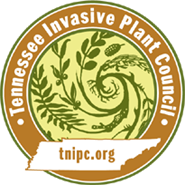Dioscorea bulbifera L.
Air Yam, Air-potato| Category |
|---|
| Vine |
|
Similar Species May be confused with the following native and/or non-native species. Landscape Alternatives lists native horticultural substitutes |
Dioscorea villosa Smilax spp. |
|---|

Description
Height
Air-potato & Chinese Yam are high climbing vines with twining and sprawling stems up to 65 feet (20 m).Stem
Stems are hairless and branch and twine to cover vegetation. Internode cross sections are round on the air-potato and angled for Chinese yams. All stems die back in winter leaving some small bulbils attached.Leaves
Leaves are alternate on the air-potato and are a combination of alternate and opposite on Chinese yam. They are heart-shaped to triangular with elongated tips, thin and hairless, 4 to 8 inches (10 to 20 cm) long and 2 to 6 inches (5 to 15 cm) wide and have Long petioles. Basal lobes are broadly rounded (air) or often angled (Chinese). Margins are smooth, and parallel veins converge at the base. Leaves are dark green with slightly indented curved veins above (quilted appearance) and lighter green beneath. Chinese yam leaves turning bright yellow in fall.Flowers
Occurring on separate plants, male and female flowers are rare, small, green to white in panicles or spikes to 4.5 inches (11 cm) long in leaf axils May to August. They are fragrant, with Chinese yam having a cinnamon fragrance (thus it's common name cinnamon vine).Fruit and seeds
Fruiting June to September (and year-round), air-potato & Chinese yam produce spherical aerial tubers (bulbils) resembling miniature potatoes with 1 to 4 occurring at leaf axils that drop and sprout to form new plants. Air-potato bulbils are up to 5 inches (12 cm) long and have a smooth texture smooth. Chinese yam fruit is warty and about 1 inch (2.5 cm) long. These plants very rarely produce capsules and winged seeds, which have questionable viability.Images
Photo: Karen Brown, University of Florida, Bugwood.orgMore images of Dioscorea bulbifera
Life History
Herbaceous, high climbing vines to 65 feet, air-potato and Chinese yam have long-petioled heart-shaped leaves. The plants have twining and sprawling stems and numerous dangling potato-like tubers (bulbils) that form at the leaf axils and underground tubers. Air-potato and Chinese yam are monocots in the Dioscoraceae or Yam family.Infestations of these plants cover shrubs and trees. Even though they die back during winter, they are still able to cover small trees in a year, with old vines providing trellises for regrowth. They spread and persist by underground tubers and the abundant production of aerial tubers, which drop and form new plants and can spread by water.
Habitat
Air-potato and Chinese yam grow rapidly and occur on open to semi-shady sites.Origin and Distribution
Introduced from Africa (air-potato) and Asia (Chinese yam), they were used as possible food sources in the 1800s. They are often spread by unsuspecting gardeners intrigued by the dangling yams and have been cultivated for medicinal use.Air-potato extends from Florida to adjacent states, and Chinese yam is found in all southeastern states except Florida.Air-potato (Dioscorea bulbifera) -- Other states where invasive: FL. Federal or state listed as noxious weed, prohibited, invasive or banned: AL, FL.
Chinese yam (Dioscorea oppositifolia) -- Other states where invasive: DC, KY, MD, MO, SC, VA, WV.
Source: Information on this plant page is primarily derived from James H. Miller's Nonnative Invasive Plants of Southern Forests, USDA Forest Service.
Management Recommendations
Herbicidal Controls
Foliar Spray Method: Thoroughly wet all leaves with one of the following herbicides in water with a surfactant (July to October): Triclopyr as a 2-percent solution (8 ounces per 3-gallon mix). Sometimes the aerial tubers take up the herbicide; otherwise, they must be collected and destroyed (not composted).Cut Stump Method: Cut climbing plants just above the soil surface and immediately treat the freshly cut stem with undiluted Triclopyr (safe to surrounding plants).
